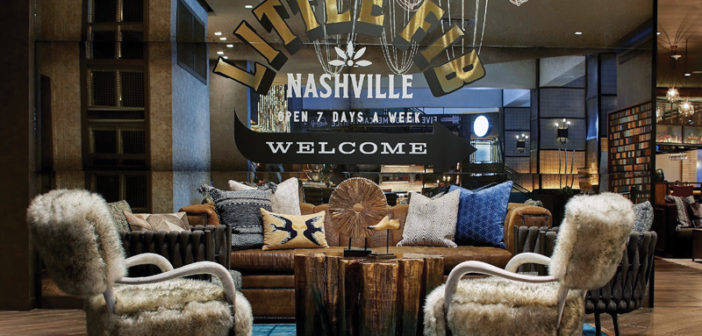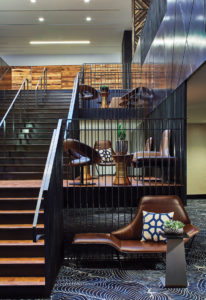DALLAS, TX—In order for a hotel to remain viable in a competitive market, renovations can—and should—take place at any time. Guests are very aware of worn out or dated furniture; carpeting that is stained or ripping apart; and empty restaurants and bars. A delay in making the correct changes and upgrades could lead to bad reviews and empty rooms.
Jeremy Robinson, SVP of sales and marketing at Premier Project Management, a hospitality project management firm based here, pointed out another reason that renovations could be the answer to guests choosing one property over another.
“The first tell-tale sign [of a renovation being necessary]is new supply. Inevitably, new hotels bring fresh design perspectives, drawing inspiration from local environments to create a better guest experience,” he said. “If your hotel is older or in need of renovation, it might lose market share. Inevitably, most hotel owners will be obligated to renovate to remain relevant.”
Early signs that a renovation is needed at a property include unactivated bars and restaurant spaces, poor wayfinding solutions, dated guestroom designs and aging exteriors, he said.
“As an example, even something as simple as the pattern of the wallcoverings can make a guest feel like a property could use a refresh,” he added.
Robinson believes that hoteliers must take an aggressive approach to renovations, rather than letting guests—through reviews or complaints to the front desk—decide when it’s time.
“I don’t think hotels owners look at negative posts and ask themselves what people are talking about. I think they know they have a problem before it gets to that point,” he noted. “It’s when the public starts taking notice and posting negative reviews that it becomes an urgent problem. Online reviews can build either positive or negative momentum. When it’s negative, it can be hard to recover. Thankfully, most brands have a required renovation schedule that owners must adhere to, which address the ‘feeling tired’ threat. But, sometimes, that’s not enough. We believe hotel owners must have a proactive strategy that addresses the future needs of their clients by staying ahead of the renovation curve.”
Since guests are fully aware of any issues around the hotel (they want the most pleasant and appealing stay for their buck), hotel staff must be on full alert to keep an eye out for any noticeable issues.
“The easiest way to identify issues before they become major problems is to be observant of areas that show signs of significant wear and tear,” said Robinson. “Hotels are used every day—that means furniture wears out quickly, paint chips off the wall, scuffs on doors occur, carpets become stained and hotel rooms can appear dark due to dated lighting. Most hotels undergo some sort of renovation every three years, replacing soft goods. If you haven’t renovated your property in five years or more, that poses an issue.”
Of course, there are ways to fix the problems before they become major ones. Maintenance is key.
“Cleaning stains as they occur, establishing a paint touch-up program and reupholstering seating is something the hotel can easily do,” said Robinson. “But it is also important to engage a design partner in a mid-size to major-size project. It’s important to bring in a team that has the entire hotel—and its corresponding brand—in mind when identifying solutions. More than anything, the designer’s job is to either stay true to the hotel’s story, or develop one, and each upgrade needs to fit within that larger context.”
When a full-scale renovation is needed, a firm such as Premier Project Management can come in and handle all aspects of the upgrade, from conceptual design through the project close out.
“We’re constantly in pursuit of finding better solutions to the hospitality industry’s increasingly complex problems,” he said. “For all renovations, significant time, effort and money is allocated toward making guests happy during the construction stage. As a specific example, our ‘Stealth Renovation’ approach is a process that seeks to eliminate the inconvenience of the construction stage as much as possible. We enlist team members to oversee proactive processes, including installation of temporary walls, efficient and daily trash removal, as well as other solutions that ensure that dust and disruptions are hidden from guest view—with minimal disturbance, stress and economic impact to the property.”
One project Premier finished last month was the renovation of the Renaissance Nashville Hotel and Conference Center in Tennessee. The company noted that the upgrade was needed due to emerging high-end competition spurred by the $400-million Fifth + Broadway development under construction adjacent to the 1985-era hotel.
The $40-million renovation included a 10-phase extensive remodel of the conference center and hotel common areas, noted Robinson.
“New monumental stairs, new bars and updated casual gathering spaces were added. Each space was gutted to re-create a seamless sense of arrival, beginning at check-in and moving through the market, restaurant, lounge and tower meeting rooms,” he said.
He continued, “The interior architecture and design solution of this project is an extension of the local culture and lifestyle to which Renaissance hotel guests are accustomed. Three brand-guiding design activators defined the design team’s approach: intriguing (engaging all the senses), indigenous (appreciative of local authenticity) and independent (rewarding wanderlust and exploration). These were what helped create cohesive modern spaces that now align with the functionality and technology of the hotel operations, resulting in a standout hotel that succeeds among the competitive tourism market in Nashville.” HB



